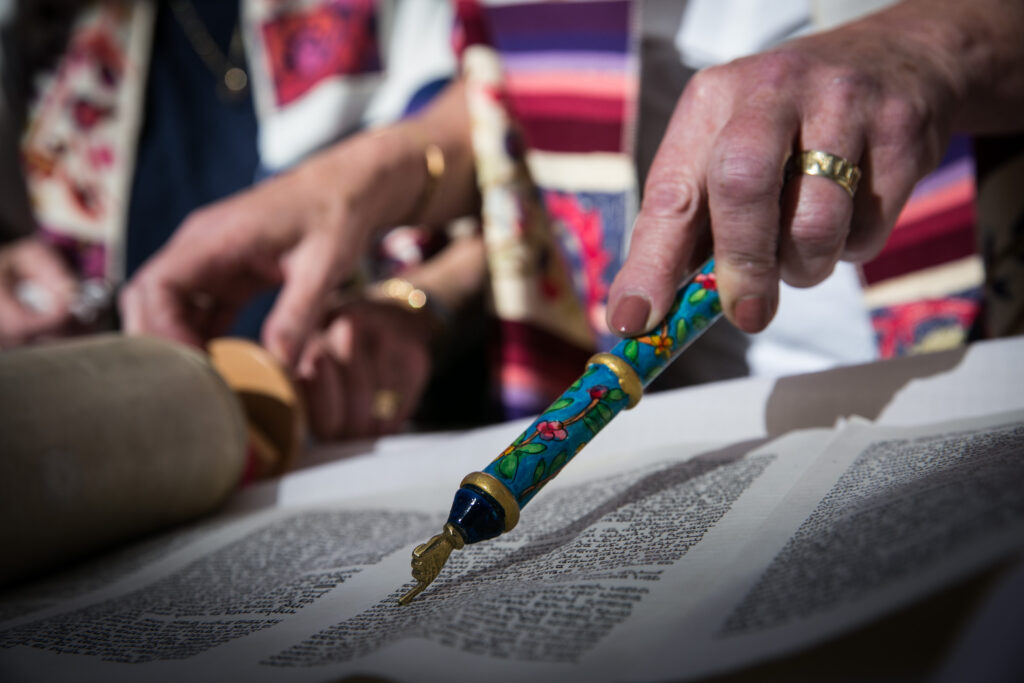The traditional Torah reading for Yom Kippur Mincha is Leviticus 18, which lists forbidden sexual relations and activities. Mahzor Lev Shalem, as well as High Holy Day prayer books dating as far back as the 1950’s, offers as an alternative reading Leviticus 19: 1-18, the so-called Holiness Code. Some of you may recall that in the 1990’s, this was the reading we did for Yom Kippur Mincha. This year, Rabbi Julie, with the approval of the Ritual Committee, has decided that we will do the alternative reading. It was felt that the Shomrei Emunah community should be made aware of this well in advance of Yom Kippur in order to understand the rationale behind the decision.
It is important to note that the choice of Torah reading is not a matter of halakha (Jewish law) but rather of custom. No one knows for sure why Leviticus 18 was selected as the reading for Yom Kippur Mincha. The Babylonian Talmud (M. Megillah 30b-31a) simply states that it was customary to do this reading but offers no rationale. A Mishnah in M. Taanit records a tradition that, during Temple times, young women in borrowed clothing would dance in the vineyards on Yom Kippur afternoon, and betrothals would be announced. Later commentators opined that it was therefore fitting that Leviticus 18 be read at that time to remind newlyweds-to-be not to adopt the licentious sexual behaviors of the surrounding nations. Still, any direct ties to Yom Kippur are tenuous at best.
So if it ain’t broke, why fix it? Well, there’s a problem. Most of the prohibitions deal with incest and adultery, and it is doubtful that anyone would take issue with those. However, there is the matter of Lev. 18:22, which states, “You shall not lie with a man as with a woman; it is an abomination.” During his tenure here, Rabbi Greenstein offered a cogent translation of this verse as an injunction against gang rape, and this became our official understanding of it. Nonetheless, most people still see it as a prohibition against homosexuality. This understandably creates distress in members of the LGBTQ community who may feel that they are being excluded from the wider community. Whenever we confront a difficult text, our tradition is not to avoid it but to grapple with it. This we do throughout the year as part of our annual Torah reading cycle. On Yom Kippur, we come together as a community to atone for our shortcomings. All should feel welcome.
By contrast, Leviticus 19 focuses on ethical behavior. While no one would suggest we need a reminder of sexual prohibitions any less than previous generations, most of us would probably relate more to the ethical teachings in this remarkable passage. Love your neighbor as yourself. Don’t curse the deaf or put a stumbling block before the blind. Barely 23 hours earlier, we chanted Kol Nidre so that we might be released from unfulfilled vows; this passage enjoins us to be careful about making such vows in the first place. It also provides a nice counterpoint to the Yom Kippur morning Torah reading. As Rabbi Craig Scheff points out, the morning reading deals with matters of ritual purity, while the Holiness Code deals with ethical purity. We are told at the beginning of the reading, “You shall be holy, for I, the Lord, am holy.” While we can never reach G-d’s level of holiness, we draw ever closer through adherence to ethical principles. On Yom Kippur, we get to embark on the new year with a clean slate. Not sure where to begin? This reading will get us all off to a good start.
L’Shana Tova!
image: “File:Torah reading by women.jpg” by Yochi Rappeport is licensed under CC BY-SA 4.0.
- Alternative Torah Reading - Thu, Sep 14, 2023
- My Week of Shiva - Mon, Mar 9, 2015
- The Windy Gragger: Purim Shpiel - Thu, Feb 26, 2015


Bravo Rabbi Julie and the Ritual Committee for finally ( in both senses of the term) bringing Shomrei’s Yom Kippur into the 21st century. The Holiness Code is much more relevant to our daily lives.
Thank you,
Bill Batkay